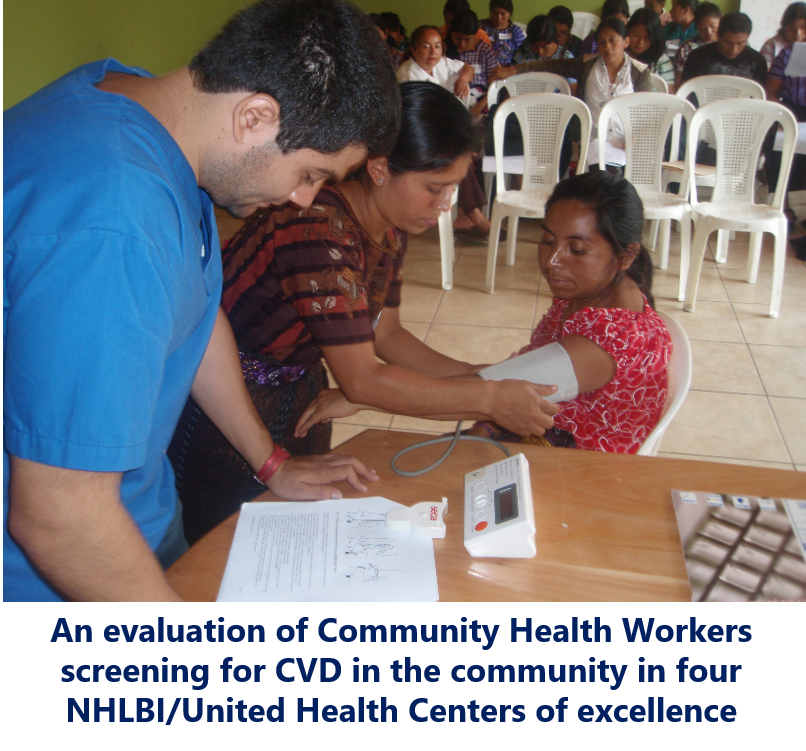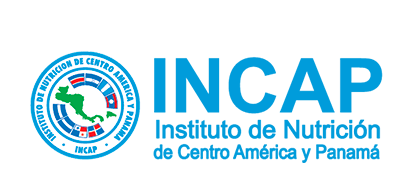
An evaluation of Community Health Workers screening for CVD in the community in four NHLBI/United Health Centers of Excellence
|
Participating institutions |
Chronic Diseases Initiative in Africa (CDIA, University of Cape Town),
Cape Town, South Africa INCAP Comprehensive Center for the Prevention of Chronic Diseases
(CIIPEC), Guatemala International Center for Diarrhoeal Disease Research, Bangladesh The U.S. Mexico Border, Pan American Health Organization Office |
|
CIIPEC Researchers |
Carlos Mendoza Montano Álvaro Rivera |
|
Other collaborating researchers
|
Naomi Levitt, Louise Niessen Maria Teresa Cerqueira Thomas Gaziano |
|
Funding agency |
National Heart, Lung
and Blood Institute (NHLBI) |
|
General objective |
1. The primary objective
of the study is to determine how well Community Health Workers
(CHWs), correctly identify persons who are at high risk for
Cardiovascular Diseases (CVD), using a risk prediction tool, by comparing the
CHW-generated to a risk score by a trained health professional. 2. The secondary
objective is to assess if patients, once identified as high risk, are
adequately referred and treated at primary health care centres score
generated by a trained health professional.
|
|
Methodology |
This study proposes to train CHWs
to use a non-lab-based risk assessment tool to identify persons at high risk
for CVD in community settings in South Africa, Bangladesh, Guatemala,
and Mexico. The risk tool developed in the US population and tested
with good performance in several South African cohorts, uses age, gender,
BMI, blood pressure, smoking status, and history of diabetes mellitus
(DM) to calculate an absolute risk score for developing CVD. The
CHW-generated risk scores will then be compared for agreement to risk
scores generated by a trained health professional. If there is
significant overlap in the percent agreement between the two sets of
scores, it will demonstrate that low-level health workers such as CHWs
can be adequately trained to screen for, and identify, those at high risk
for CVD. The referral pattern for high-risk patients from CHWs to a
trained health professional at a community health clinic will also be
assessed. Finally, CHW knowledge levels and retention of knowledge about CVD
and its risk factors will be evaluated.
Participating countries ·
Guatemala ·
South
Africa ·
Bangladesh ·
US México
border
|
















